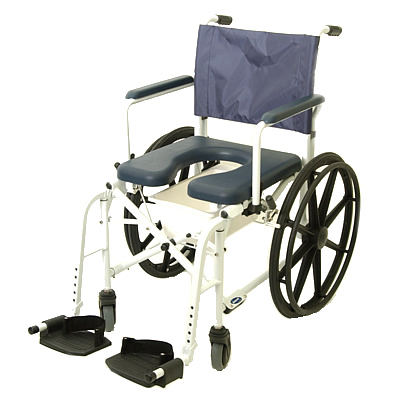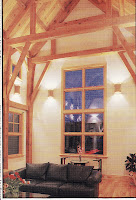Universal design is the design of products and environments to be usable by all people, to the greatest extent possible, without the need for adaptation or specialized design.–Ron Mace
The intent of universal design is to simplify life for everyone by making products, communications, and the built environment more usable by as many people as possible at little or no extra cost. Universal design benefits people of all ages and abilities.
Why is Universal Design special sauce for mature marketing?
Because Universal Design benefits complement the mature marketing keys discussed in the past few entries.
Universal Design means a larger market. More people can use a Universally Designed home or product. That means more prospects will consider it, more people will buy it. For manufacturers and builders that equals a larger pool of potential buyers. For the consumer considering Universal Design that is a larger resale market. Not only does Universal Design appeal to more people but it appeals to the largest growing market segment. All that makes it a better investment.
Universal Design appeals to lots of people. It also prepares for change over the course of our lives. Each of us is lots of different people. Abilities and needs grow from helplessness at birth through increasing mobility, dexterity and agility and sometimes back full circle. As we reach full height our reach and strength increases. As we get older, especially with increasing longevity, we see diversity. Some of us walk and some shuffle. Some stand, some sit. Some have good balance, others arthritis. We evolve slowly through our lives. Universal Design, conceived for many different people, also works for the changes and variations of our individual lives. Universal Design is a better bet for whole lives.
A bathroom that works now and later is better than one that works now but will be problematic when you are recovering from an illness or injury or need help in the bathroom. A Universally Designed bathroom can be used on foot, with a cane or walker, in a scooter or using a rolling shower commode chair. This ergonomic space is flexible and safer for you and caregivers.
 Think like this: Get up and stretch. Get into your rolling shower commode chair. Roll into the bath over the toilet, into the shower, up to the sink. Roll back out to an area that is not so hard and wet as the bathroom. Dry, stand and dress. You never stood or shifted on your feet. The chance of falling is nearly zero.
Think like this: Get up and stretch. Get into your rolling shower commode chair. Roll into the bath over the toilet, into the shower, up to the sink. Roll back out to an area that is not so hard and wet as the bathroom. Dry, stand and dress. You never stood or shifted on your feet. The chance of falling is nearly zero.
You don’t have to use it this way. You can walk into the bathroom. See my earlier post: Riding with the Radio OFF!
This strategy is possible in a well designed and attractive bathroom. That makes Aging in Place real because it eliminates forced moves in a crisis. That appeals to boomers and older consumers alike. Boomers shopping with mom and dad both see value. Marketing Universal Design crosses the consistent paradox. Both leads from the same marketing.
Compare Universal Design to insurance. We pay premiums hoping never to collect the benefits. Universal Design is better insurance because you enjoy the benefits even if you never ‘need’ it. That is value a mature consumer appreciates.
 That universal design works for more people and more situations frees us to reinvent, redefine and repurpose. Our nurturing family room becomes a glorious yoga or meditation room.
That universal design works for more people and more situations frees us to reinvent, redefine and repurpose. Our nurturing family room becomes a glorious yoga or meditation room. A spacious spa-like bathroom becomes a safe place to give or receive care. A no step entry works for a wheelchair but also a stroller and the luggage we take on vacation. Adaptability appeals to everyone experiencing change. We don’t know where we are heading. Universal Design is fertile ground for growing personal development.
Though not often recognized as a sustainability practice, Universal Design should be acknowledged as one. Universal Design means a product with longer usability. It is the opposite of short term, throw away and planned obsolescence. Universal Design products provide value today, as the purchaser changes and beyond their needs. That is superior use of resources.
Visitability is a movement to assure that single family houses are built so people with mobility problems can live in and visit them. Concrete Change, the movement’s website, explains how visitability extends civil rights (bathrooms, drinking fountains, jobs, hotel rooms) from the public sphere legislated by the ADA, to our homes. These are progressive homes responding to changes in our society, providing inclusion for those sometimes relegated to the margins.
This entry describes the good value a consumer gets from Universal Design. You, as the client’s advisor, gain their trust from thoughtful recommendations and explanations. That frees their time. Their goal, a smart purchase, is assured with less research and worry.
The usability and flexibility inherent in Universal Design allow the client to see their personal desires in the product. The pleasure of their purchase is enhanced. Some mature clients worry that purchases make them appear self indulgent. Expansive usability reassures the wisdom of their decision. A wise purchase that provides personal pleasure is tailor made for mature shoppers.
The final pitch, that the purchase meets the client’s n
eeds while caring for the future of their family (grandchildren), the community and the planet appeals to the altruistic mature consumer. Doing something for myself and others at the same time? Super bonus.
Universal Design demonstrates that mature consumers can be reached respectfully and successfully. Both require subtlety, appealing to upper levels of Maslow’s hierarchy of needs. That Universal Design, a foundation of Aging in Place, makes sense for outreach to the consumers who want to Age in Place is proof text for both concepts.
 Louis Tenenbaum, one of the nation's leading authorities on aging in place, is the founder of HomesRenewed, a coalition of business, consumers and nonprofits, driving policy and investment to increase the number of age-friendly homes.
Louis Tenenbaum, one of the nation's leading authorities on aging in place, is the founder of HomesRenewed, a coalition of business, consumers and nonprofits, driving policy and investment to increase the number of age-friendly homes.
{ 1 comment… read it below or add one }
Your writing is amazing! Always insightful, thorough and expansive.
Emily Post for Buildings:
“In 1922, Emily Post wrote her famous guide to social etiquette. Some people now perceive it as an obsolete set of behavioral rules for people in high society. However, this interpretation misses its theme: the promotion of core values like consideration, thoughtfulness, and kindness. It is also misses the personal benefits of good manners, which include confidence, self-respect, and an instinctual feeling that one is doing the right thing. Following an outward set of behavioral rules enables us to fulfill our inward human need of belonging and being a member of a society. What has changed since Post first published her guidebook is the prescribed behavior. What hasn’t changed are the fundamental core values behind the manners.
Whereas etiquette provides guidelines for person-to-person, universal design provides them for the environments we occupy and the tools we use; it is environment-to-person. No longer will building just be about shelter, function or good looks. Universal design brings etiquette to how your home is crafted. A home or community that applies these guidelines is one that is inviting and welcoming to all; it is a well-mannered house. No longer is one shut out because an “ignorant†building unfairly impedes entry due to a limitation in physical ability.â€
Copyright © 2009 by Konrad Kaletsch
Please place me as a resource for future articles and as possible, make available my web and blog links. I am a consumer advocate for universal design and am publishing a comprehensive and concise users manual this February from which the above is a quote.
http://www.universaldesignresource.com/
http://universaldesignresource.blogspot.com/
{ 1 trackback }